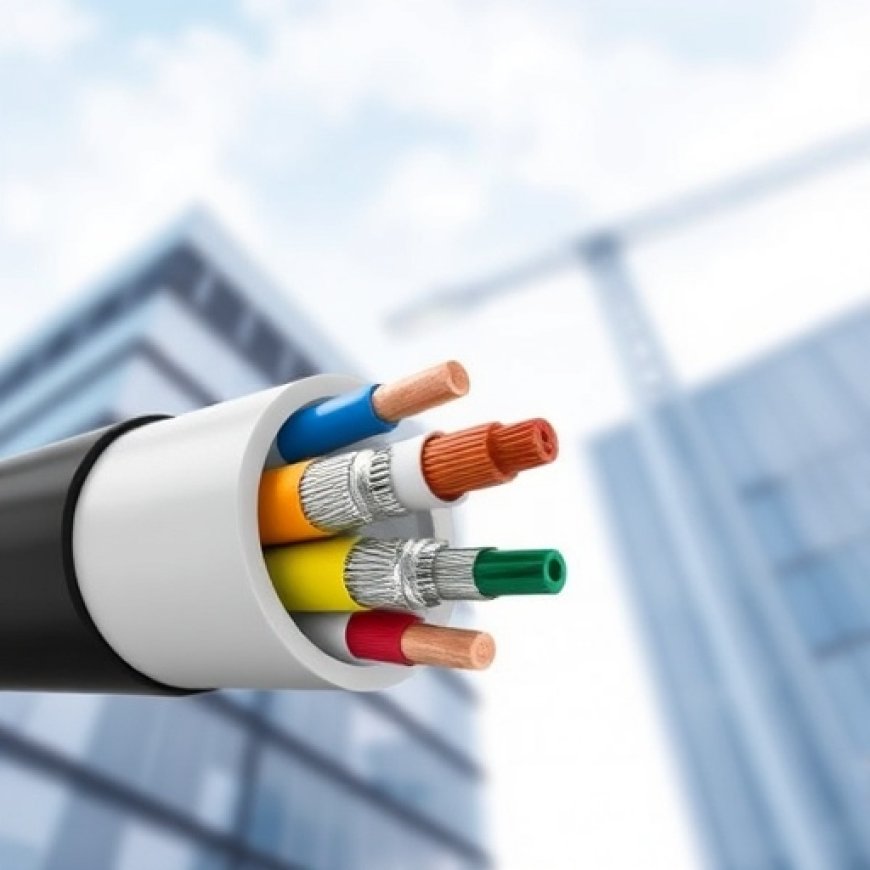The Importance of Halogen-Free Flame Retardant Cables in Modern Building Projects
In the world of construction and electrical installations, safety is a paramount concern. Modern building projects, whether residential, commercial, or industrial, place a strong emphasis on choosing materials and systems that not only comply with safety regulations but also promote a healthier environment. One crucial aspect of electrical safety is the selection of appropriate cabling solutions, which is where halogen-free flame retardant (HFFR) cables play a critical role.

What are Halogen-Free Flame Retardant Cables?
Halogen-free flame retardant cables, as the name suggests, are cables designed without the use of halogens—elements such as chlorine, fluorine, bromine, and iodine that are commonly found in traditional PVC-insulated cables. Halogens, when exposed to high temperatures or fire, can release toxic and corrosive gases that pose serious health risks and damage to electronic equipment. HFFR cables are specifically engineered to address these safety concerns by using alternative materials that do not emit hazardous gases when burned.
Why Halogen-Free Flame Retardant Cables Matter
Reduced Toxicity and Smoke Generation
One of the biggest advantages of HFFR cables is their ability to minimize smoke and toxic gas emissions during a fire. Traditional cables with halogen-based insulation release thick smoke and harmful gases like hydrogen chloride, which can cause severe respiratory problems and hinder evacuation efforts. In contrast, halogen-free cables produce less smoke and fewer toxic fumes, making it easier for occupants to escape and for rescue teams to operate safely.
Improved Fire Safety and Retardation
HFFR cables are designed to limit the spread of fire along cable routes. This quality is crucial in modern buildings, where cables often run through walls, floors, and ceilings. Preventing the spread of flames can significantly reduce property damage and protect critical infrastructure from being compromised. The flame-retardant properties of these cables contribute to the overall fire resistance of a building, which is essential in areas with stringent safety regulations.
Environmental and Health Benefits
The absence of halogens in HFFR cables makes them a more environmentally friendly choice. In the event of combustion, these cables do not release corrosive substances that could damage nearby electronic equipment or create hazardous waste. Additionally, the lack of toxic emissions reduces health risks for occupants, making these cables ideal for hospitals, schools, and other public buildings where safety and air quality are paramount concerns.
Compliance with International Safety Standards
Many countries and regulatory bodies have started to mandate the use of halogen-free cables in specific applications. For instance, the European Union’s Construction Products Regulation (CPR) requires building materials to meet strict safety and environmental standards. Using HFFR cables ensures compliance with these regulations, helping building projects meet necessary certifications and enhancing the overall reputation of the construction.
Protection of Equipment and Data
In high-tech environments such as data centers and telecommunication hubs, the integrity of electronic equipment is crucial. The corrosive gases released by burning halogen-based cables can cause irreversible damage to sensitive components and systems, leading to costly downtime and data loss. HFFR cables mitigate this risk, making them the preferred choice for installations that require high reliability and minimal disruption.
Applications of Halogen-Free Flame Retardant Cables
HFFR cables are used in a wide range of building applications, including:
Public Buildings: Hospitals, schools, and airports where occupant safety is a priority.
High-Rise Buildings: Office buildings and residential towers where evacuation can be challenging.
Subways and Tunnels: Enclosed spaces with limited ventilation, making smoke management essential.
Industrial Plants: Facilities with complex machinery and sensitive electronics.
Marine and Offshore: Environments where fire safety and low-smoke emissions are critical.
Conclusion
The adoption of halogen-free flame retardant cables is more than just a trend—it's a necessity for modern building projects that prioritize safety, health, and environmental sustainability. With their reduced toxicity, enhanced fire retardation, and compliance with international safety standards, HFFR cables offer a comprehensive solution for safer and more resilient buildings. As construction practices continue to evolve, the integration of such advanced materials will play an increasingly important role in shaping the future of safe and sustainable infrastructure.
The Ultimate Guide for Electrical Engineers: Choosing High-Quality Electrical Products
Innovations in Wires & Cables: How RR Kabel is Revolutionizing the Electrical Contracting Industry
What's Your Reaction?


























